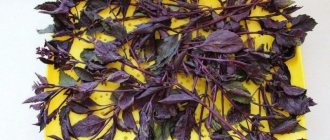When is the best time to collect rosehip, how to dry it and use it? What can you cook delicious, and most importantly healthy, with rose hips?
- When to collect?
- How to collect?
- How to dry?
- What is the best way to store rose hips?
- Recipes with dried rosehips Rosehip drink
- Rose hip jelly
- Vitamin tea made from rosehip, rowan and oregano
- Rose hip tea
- Rosehip compote
How to dry rose hips?
First, sort through the harvested crop and discard the affected fruits. No need to wash the berries! You can dry them either whole or cut into halves. The faster the drying, the less nutrients the rosehip will lose. If you plan to dry it in the oven, then preheat the oven to +40°C, hold a baking sheet with rose hips scattered in one layer in it for about an hour, then raise the temperature to +60°C. The rose hips will take 8-10 hours to dry. Second option: first hold the rose hips for 5-10 minutes at a temperature of 100°C, then dry at a temperature of +70...+75°C. For high-quality drying, constant air movement and moisture outflow from the oven are necessary. Convection ovens or an open door can provide the necessary conditions. Regular stirring or turning of the slices also contributes to uniform drying. If you plan to dry the fruits using a Russian oven, keep in mind that you can put rose hips in it two to three hours after it has been heated. You can also use a convection oven or electric dryer. When squeezed, the skin of a well-dried rosehip does not wrinkle, but springs back. Dried fruits crumble.
Rosehip tea is very beneficial
What kind of rose hips can be collected?
For harvesting, you need to select fruits that meet several criteria at once:
- Rose hips should be collected at the moment when they are fully ripe, i.e. will acquire a rich orange or light red color (depending on the variety).
- It is important to determine the timing very precisely, since both unripe and overripe rose hips are not suitable for harvesting.
- The fruits should be firm to the touch, not softened or spoiled.
- For drying, it is better to collect only large and medium-sized rose hips: small ones have worse taste, and they do not contain many useful substances.
- For collection, you need to select only well-known, described varieties.
- Bushes growing near roads or industrial enterprises should be avoided. It is also not worth collecting fruits in the city. To do this, they specially travel to the countryside, to the edges of forests, and to river floodplains.
Is it possible to collect rose hips after frost?
There are folk “legends” that rose hips can be harvested after frost. But due to the decrease in temperature, many useful substances are destroyed. The berries lose their taste and begin to taste bitter. In addition, they may deteriorate slightly, and as a result, the yield of the finished product will decrease.
Is it possible to collect green unripe rose hips?
Unripe, greenish or not very bright fruits should also not be collected. Unlike ripe berries, they do not have a rich vitamin composition. The taste and aroma of such rosehip is not so bright.
Is it possible to collect overripe fruits?
You can also take overripe (soft) berries. They have much less vitamin C, but more sugar. Therefore, such fruits are noticeably tastier. They are often used to make jam or fruit drinks.
Attention! Overripe rose hips take longer to dry and can spoil quite quickly. Therefore, it is better to use them first or immediately send them to preparations (jam, compotes, etc.).
For drying, it is advisable to use only ripe, but not overripe or frost-damaged berries.
What is the best way to store rose hips?
After drying, the sepals must be removed from the fruit by rubbing them in your hands. Then pour into a wooden box, cardboard box or bags made of fabric or paper and keep at room temperature for 2-3 days to equalize the humidity. After this, the fruits can be transferred to glass or tin jars for permanent storage. But it is better not to cover them with lids, but to tie them with gauze - for air circulation, so that the fruits do not become moldy over time. Dry fruits can be stored in this way for up to three years.
Drying methods at home
Before you start drying, you need to carefully review the harvest again and remove limp or spoiled fruits, as well as leaves and other debris that got into the basket during harvesting. Rose hips are not washed before drying - the dust is removed from them immediately before brewing. Drying is carried out in two ways:
Natural drying or cold method
The simplest method, which requires a well-ventilated dark room without access to sunlight - this could be an attic or a barn. The collected fruits are scattered in a thin layer on any horizontal surface, placing cardboard, plywood, clean burlap, a mesh tray and other available means.
Drying rose hips naturally
The berries are stirred from time to time so that they do not cake or become moldy. Drying is continued until the rose hips become dry and hard. Natural drying is preferable - this method preserves the maximum amount of nutrients in the berries.
Heat treatment or hot method
The use of heat treatment at home is more suitable for urban residents who do not have the opportunity to dry rose hips naturally. The fruits are placed on a baking sheet in one layer and placed in the oven, setting the temperature to 40-60°C . The berries take a long time to dry – several hours. There should be an outflow of moisture evaporating from the berries from the oven, so keep the oven slightly open. If your oven has a convection function, you need to turn it on when drying rose hips. The berries are stirred periodically to prevent them from burning.
Drying rose hips in the oven
It is recommended that medicinal raw materials dried using the “hot” method should not be stored immediately , but kept open for a couple of days at room temperature.
During heat treatment, it is not recommended to overdry rose hips - such berries become fragile and crumble in your hands. Well-dried berries acquire a rich orange, red or burgundy color, and the skin springs back when pressed on it.
Recipes with dried rose hips
The first thing to do with dried rose hips is to wash them. Then the fruits can be twisted in a meat grinder, cut with a knife or crushed on a plate with the bottom of a glass or cup if a small portion of raw materials is required. If you brew the rosehip whole, it will give less vitamins to the drink. As a rule, crushed fruits are poured with boiling water, boiled in a water bath for five to thirty minutes and infused in a thermos for about half an hour. You can not boil it, but pour boiling water over it and leave it in a thermos overnight. Usually, sugar, honey or herbs - mint, lemon balm or stevia - are added to rose hips to improve the taste before use. Before use, it is worth straining the infusion through cheesecloth so that the hairs do not irritate the digestive system.
Rosehip infusion can be drunk before meals 2-3 times a day for a month. In addition, it can be poured into ice cube trays and frozen: such cubes are an excellent cosmetic product that tones the skin.
Rose hip drink
Wash dried rosehips (1 tablespoon), crush them, pour boiling water (200 ml) and boil for 8-10 minutes. Place the broth in a warm place and then strain. You can add sugar or honey.
Rose hip jelly
Chop dried rose hips (100 g), add water (2 liters), boil over low heat for 15 minutes, then strain. Add sugar (200 g), lemon pieces or citric acid (0.5 g) to the broth, add starch (50 g) diluted in cold water, bring to a boil.
Vitamin tea made from rosehip, rowan and oregano
Add rose hips (20 g) and rowan (10 g) with water and cook for 5 minutes, add oregano herb (5 g), leave for 10 minutes.
Rose hip tea
Boil dried rose hips (100 g) in a liter of water for 5 minutes. Leave for 40-60 minutes, strain, add lemon juice and sugar to taste. Rose hips can be used not only dried, but also fresh.
dried rose hips
Recipes with fresh rose hips
Rosehip compote
Wash the mature rose hips, cut them, remove seeds and hairs, rinse in cold water, dip in hot sugar syrup (0.5 kg of sugar per 1 liter of water) and leave in it for 8-11 hours. Then separate the fruits from the syrup and transfer to glass jars. Heat the syrup to a boil, boil for 2-3 minutes and pour the fruits into the jars. Then pasteurize in boiling water: half-liter jars - 10-15 minutes, liter jars - 15-20 minutes, then roll up the jars, turn them over onto the lid and leave until they cool.
Rosehip compote with sea buckthorn
A very pleasant and unusual compote can be prepared from large rose hips with sea buckthorn. Cut thoroughly washed rose hips in half, remove seeds and “hairs” (it’s more convenient to use a coffee spoon) and fill half-liter jars with them, alternating layers with sea buckthorn (in the ratio of 3 parts rose hips: 1 part sea buckthorn). Pour boiling sugar syrup (500 g of sugar per 1 liter of water), roll it up, turn it upside down, place it on the floor on a newspaper and wrap it in a warm blanket (or a jacket) overnight.
Rosehip and apple juice
Cut peeled rose hips (3-4 tablespoons) and apples (4-5 pieces) into small pieces, add cold water (1 liter) and boil for several minutes. Then strain, add sugar or honey (3-4 tablespoons), a little lemon or orange zest, lemon juice or citric acid (to taste) to the broth.
Punch with rose hips and red wine
Pour rose hips (50 g) with water (700 ml) and leave for several hours, then heat and boil for 3-5 minutes, then strain. Add 80-100 g of sugar and 0.5 liters of dry red wine to the filtrate, heat again, but not to a boil, and finally add the juice of 1 or 2 oranges. Serve hot.
Drink made from fresh rose hips
Pour washed fruits (500 g) into 2 liters of hot boiled water. When the water has cooled, add raisins (50 g) and syrup (500 g sugar per 500 ml water). Then cover the vessel and put it in a cool place. Drink the drink every 2-3 days.
Rosehip pureed with sugar
Mix rosehip puree with sugar in a 1:1 ratio, heat to a temperature of 70-80°C and immediately pack into hot sterilized jars and pasteurize in boiling water: half-liter - 20 minutes, liter - 25 minutes.
Rose hip jelly
Pour water (600 ml) over the seeds and hairs of rose hips (1 kg), boil over low heat until softened, wipe, squeeze out the juice. Dissolve sugar (500 g) in juice and cook until it reaches the consistency of jelly.
Rose hip puree
Peel ripe rose hips (1 kg) from seeds and hairs, rinse thoroughly, add water, boil for 10 minutes, place in a sieve. When the water has drained, wipe, add sugar (200 g), bring to a boil, pour in rosehip petal syrup (200 ml), stir. Pour the puree into sterilized jars, cover with lids, pasteurize at 70°C: half-liter jars - 15 minutes, liter jars - 20 minutes.
Rosehip jam
Select slightly unripe fruits of high-vitamin rosehip varieties. Wash, cut, remove hairs and seeds, blanch in boiling water (no more than 2 minutes), drain the water. Transfer the fruits to hot 70% sugar syrup, leave in it for 3-4 hours, then finish cooking the jam. It is advisable to prepare the syrup using water in which rose hips have been blanched. For 1 kg of prepared fruit, use 1.2-1.3 kg of sugar.
Rosehip jam with cranberries
Prepare rose hips (1 kg), add cranberries (300 g), sugar (1.2-1.5 kg per 1 kg of mixture). Cook like rosehip jam.










